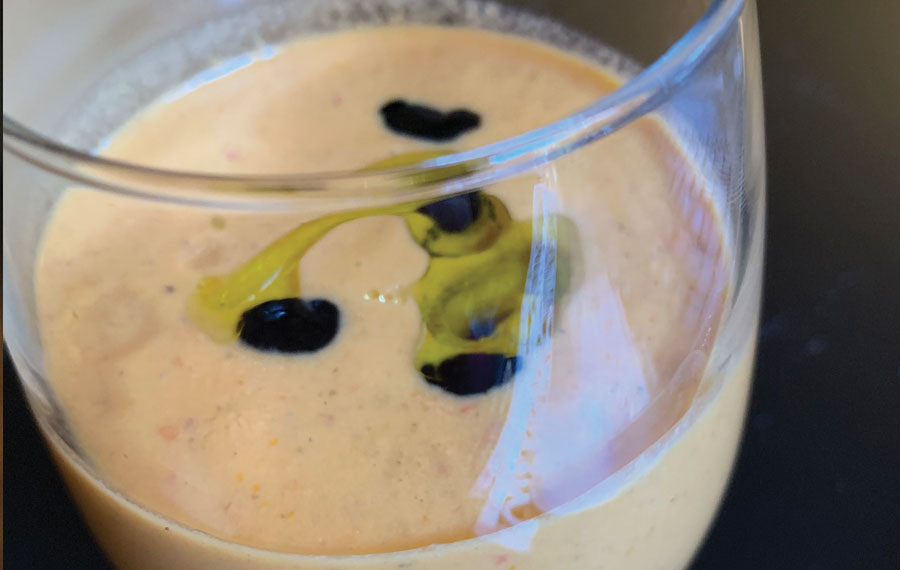
When I opened the first Mexican restaurant in Uganda and hired local cooks, not only had my team never experienced any of the dishes I’d put on the menu, most of them had never even eaten at a restaurant before.
As hard as this was to fathom, I stubbornly refused to compromise on the breadth of my menu and, as a result, had to train the staff in the face of enormous hurdles. It’s difficult enough to train new staff in an American kitchen, where the line cooks can relate to the taste of the dishes, but imagine trying to transfer “taste knowledge” to someone who doesn’t recognize the flavor profile of anything on the menu.
For months before the opening, I assembled my newly hired team of cooks, bakers and waitstaff, many of whom barely understood English, and cooked the entire menu repeatedly and fed it to them each day. While my young hires watched me cook with looks of confusion and trepidation on their faces, I too watched them as they ate, trying to determine by their expressions, which were equally puzzling to me, how my food was settling on their virgin palates.
Of the many challenges I faced during those first months — staff who barely understood me, suppliers who saw only dollar signs in the color of my skin, and the predominant sexism that made being a female boss of a kitchen a daily struggle — probably the single biggest challenge was trying to teach flavors to people who didn’t share my taste memories. I learned the hard way that my Ugandan customers may not necessarily be able to cross the boundaries set by their own cultural food norms, but I also learned to convey the taste of a food by finding the similarities present in every cuisine. Strangely, it was my first experience teaching my staff how to make an Israeli classic that illuminated my understanding of a Spanish one.
Gazpacho, the Andalusian favorite that is eaten daily by harvesters whose long summer days at work in the fields are broken up by this cooling and refreshing soup, has become a staple on menus all over the globe. When the days turn long and tomatoes are ripe in gardens and markets, you’d be hard-pressed to find a restaurant menu without gazpacho on offer. Because my father is a gazpacho aficionado, I had sips of it from his spoon many times, but it wasn’t until I tasted one of the umpteen versions in Spain that I was moved to order it myself.
Rather than the chunky, red version I had tasted in the U.S., one that seemed akin to eating an insipid, watery salsa, the gazpacho of southern Spain is a full-bodied, orange-hued affair, balanced and nuanced in flavor, bursting with freshness and vitality. On days when you’re too hot to chew, gazpacho is Spain’s answer to a smoothie: savory and bright, not eaten with a spoon or from a fancy bowl, but from a small simple glass, sometimes nestled in ice but more often straight from the heat of the fields.
I was instantly captivated by my first taste; Spanish gazpacho seemed to be an entirely different animal from any others I’d tried, yet something about it was hauntingly familiar. The scent drove me crazy for ages, the memory snagging on the periphery of my taste buds like a melody I was unable to hum — I’d catch a whiff but then couldn’t quite place the notes.
Then one day, while teaching my new staff how to make an Israeli chopped salad, it hit me straight in the nostrils. There it was — that perfume, the scent of green pepper and onion, of ripe tomatoes and the unmistakable freshness of cucumber, each vegetable in harmony yet singing its own tune, none overpowering the other. I quickly threw the salad in the blender, bewildering the bejesus out of my crew, who must have thought their new boss had gone mental.
I added some garlic, the soft white middles of a few bread rolls we had baked the day before, and a large glug of the olive oil and lemon juice dressing I’d just taught them to prepare. And even before I tasted it, I knew by the tint that was intensifying like a sunrise from the bottom of the blender that I’d just hit the jackpot. Gazpacho, in all its modest glory, is in its essence a liquid Israeli salad, one with the bread you use to soak up the juices at the bottom of the bowl thrown in for fortification. No wonder I was in love with it at first sip.
I added a few spoonfuls of the pico de gallo we’d made earlier for benefit from the mild heat of jalapeno, an ice cube to thin and chill, and ran the blender another 30 seconds. I poured it into glasses and drizzled it with olive oil and a drop of red wine vinegar to approximate the taste of the more traditional sherry vinegar.
“It’s katchumbari!” my student chefs proclaimed excitedly, recognizing the taste of the common Swahili tomato, onion and chile salad/condiment served with roasted meat all over East Africa.
How far my Israeli salad-turned-gazpacho traveled from its past, when it was only a paste of bread, salt, garlic, olive oil and vinegar, carried by Roman legions along the shores of the Mediterranean and migrating toward its Spanish grandparents. It lingered long enough to pick up tomatoes from the Andes and almonds from the Moorish influence of North Africa, producing distinct regional varieties.
Gazpacho remains exotic even as it’s become common, as humble and unpretentious as its taste is extravagant, the culinary culmination of a thousand summers spent working in the fields, a single sip able to easily translate an ancient taste memory from one culture to another.
GAZPACHO
4 slices day-old bread, crusts removed
3 ice cubes
2 cups cherry tomatoes or 5 medium-sized, ripe red tomatoes
1 small Persian cucumber (about 1 1/4 cups), peeled, chopped into large pieces
1 stalk celery
1 medium green pepper, pith and seeds removed
1 jalapeno pepper, pith and seeds removed (optional)
1/2 medium yellow onion, cut into chunks
2 cloves garlic, peeled
1 1/2 teaspoons sea salt, more to taste
1/4 teaspoon black pepper
Juice of 1 lemon
1 teaspoon red or white wine vinegar or sherry vinegar
2 pinches of sugar
1/2 cup good olive oil, preferably Spanish, plus more for drizzling
1 teaspoon balsamic reduction, optional garnish
Place the bread slices in a bowl with a bit of water to soak for a few minutes, then squeeze out excess water. Place ice cubes at the bottom of a blender and then add all remaining ingredients (except for balsamic reduction), including soaked bread. I use cherry tomatoes as they are sweeter and have thin skins. If using regular tomatoes, they must be blanched in boiling water and peeled when they’re cool enough to handle.
Taste gazpacho and adjust seasonings to your liking. Soup should be thick, almost to smoothie consistency. It can be thinned out to desired thickness with a few extra tablespoons of water. Store in refrigerator in a glass jug or bowl and stir before serving.
Pour into chilled glasses and drizzle a bit of olive oil on top and a few optional drops of balsamic reduction.
Makes 15 small juice glass-sized portions.
Yamit Behar Wood, an Israeli-American food and travel writer, is the executive chef at the U.S. Embassy in Kampala, Uganda, and founder of the New York Kitchen Catering Co.























 More news and opinions than at a Shabbat dinner, right in your inbox.
More news and opinions than at a Shabbat dinner, right in your inbox.